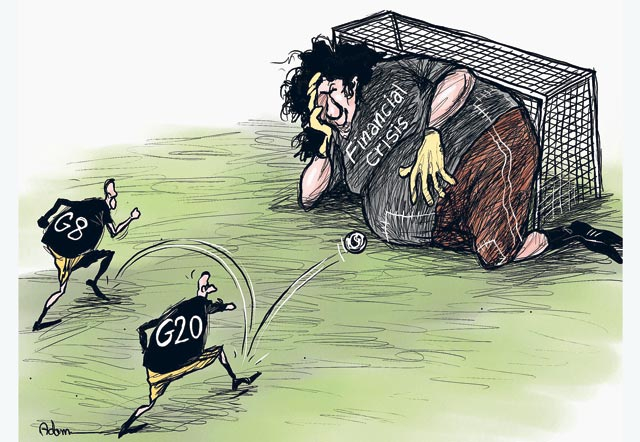Ever since the global financial crisis a decade ago, people have found it hard to resist the temptation to speculate that another crisis is brewing. As a result, many leaders have spiralled into premature crisis mode.
I’m not in the camp that says a crisis is coming soon, but if you are, don’t be afraid of what awaits. Because doing so will only strip you of your growth potential. Instead, take a leaf out of Dubai’s book.
During the 1920s, the final day of the pearling season was a day of great celebration across the Gulf. Every November, families would gather around the ports, eagerly awaiting the safe return of their men, who’d been pearling at sea for six months. As they heard the men’s chants booming from their approaching boats, families would rush to the beachfront to celebrate.
But not in November 1928. That year, only gloom greeted the pearl divers.
Over the summer, while the pearling fleets had been at sea, a cheap alternative from Japan called “cultured pearls” had poured into the international markets, effectively wiping out the natural pearl industry in one fell swoop.
As the name suggests, natural pearls are formed by nature. They are the beautiful result of an oyster’s defence against any intruder that breaches its shell walls. When a parasite or other irritant manages to prize its way inside, the oyster secretes a smooth fluid called nacre, that hardens to form a cyst around the alien object.
After years of depositing layer upon layer of nacre over the irritant, the oyster survives and a pearl is formed.
Natural pearls occur more or less by chance, making them so rare and expensive during the 1920s that they were reserved only for the aristocracy. By contrast, cultured pearls are human creations. They are formed by artificially inserting a tissue graft from a donor oyster, which then triggers the recipient oyster’s natural defences, effectively replicating the natural process.
In 1916, Japanese biologist Tokichi Nishikawa was granted the patent for cultured pearls, and a dozen years later, the first commercial crop was successfully produced, changing the industry forever. Today, more than 99 per cent of all pearls sold worldwide are cultured.
The effect on Dubai was immediate and catastrophic. Fashion houses failed to arrive for the end-of-season buying period when the pearlers made their annual haul. With no sales, there was no payment of salaries and no way to repay the loan sharks who had provided money for the pearlers to buy more boats and employ more men.
In previous years, Dubai’s pearling industry had grown aggressively with the help of borrowed funds from India. Crews were typically paid half their salaries on departure — cash borrowed from moneylenders at a high rate of interest — and the second half on their return from sea. Not in 1928.
Boat owners that year were immediately made bankrupt and 75 per cent of the liquidity from the market was gone.
It was an economic shutdown. Pearling had formed the backbone of the Gulf economy and, during the early 1900s, had accounted for a whopping 95 per cent of the area’s economic activity. An unforeseen perfect storm settled over Dubai exactly one year before the Great Depression cast its gloomy shadow over the world.
Still, Dubai withstood the pearling crisis and in the decades that followed, went on to become the major trading port on the Arabian Peninsula, and eventually a global hub. Herein is the lesson.
In times of crisis, do as Dubai did, stay focused on the future and move forward. A crisis isn’t the time to stop; it’s the time to work even harder. Frankly, a crisis is your real opportunity for success, because what you do at the low points will determine your future trajectory.
When you face a challenge, it isn’t the time to stop; it’s the time to work even harder. Do nothing and the future is determined.
Take a risk, and, who knows? Things might just be different.
Tommy Weir is CEO of the EMLC Leadership Ai Lab and author of ‘Leadership Dubai Style’. Contact him at tsw@tommyweir.com.













